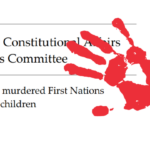Cassius Turvey Murder Case: The Impact of Race and Social Status in Criminal Investigations

The murder of 13-year-old Cassius Turvey, a Noongar schoolboy from Perth, at the hands of a group of white men while he was walking home from school was one of the most confronting criminal cases in recent Australian history, highlighting deep issues in the criminal justice system, including the problem of differential treatment of investigations based on race and social justice.
The Supreme Court of Western Australia delivered its long-awaited verdicts in May 2025, which were as follows:
- Jack Brearley and Joshua Palmer were convicted of murder and sentenced to life imprisonment, with non-parole periods of 22 and 18 years, respectively.
- Troy Forth was found guilty of manslaughter, receiving 12 years’ imprisonment (10 non-parole).
- Kellie Gilmore was acquitted of murder but convicted of accessory and hindering offences.
The sentences were handed down under section 279 of the Criminal Code (WA) and section 90 of the Sentencing Act 1995 (WA), which together provide for mandatory life imprisonment for murder, but permit judicial discretion in fixing a non-parole period.
While the trial brought some measure of justice for Cassius’s family, it also raised enduring questions about how Australia’s legal system grapples with race, youth, proportionality, and deterrence — issues with ramifications well beyond Western Australia.
A Case That Shocked the Nation
Cassius Turvey was attacked while walking home from school in Midland, Perth, on 13 October 2022. He suffered severe head injuries after being beaten with a metal pole and died in hospital ten days later.
The attack, which police confirmed was unprovoked, prompted national vigils and a wave of public grief. Indigenous and non-Indigenous Australians alike took to the streets to demand justice, solidarity, and reform.
Prime Minister Anthony Albanese described the case as “every parent’s nightmare,” while Indigenous leaders warned that Cassius’s death reflected broader systemic inequities.
Legal Context and Findings
The trial’s outcomes reflected the nuanced application of long-established legal principles — particularly those governing murder, manslaughter, and secondary liability. For instance, the concept of joint criminal enterprise, where a person who participates in a joint criminal enterprise can be held liable for any offence committed in furtherance of that enterprise, was a key aspect of the case.
Joint Criminal Enterprise and Common Purpose
Under Western Australian criminal law, a person who participates in a joint criminal enterprise can be held liable for any offence committed in furtherance of that enterprise, provided the outcome was a foreseeable consequence.
In this case, only Brearley and Palmer were found to have shared the intent to kill or cause grievous bodily harm required for murder. The jury found that Forth, while involved, lacked that intent — leading to a manslaughter verdict. Gilmore’s convictions for hindering police (under section 172 of the Criminal Code (WA)) and accessory conduct illustrate the court’s nuanced distinction between active participation and after-the-fact assistance.
This differentiation between degrees of culpability underlines the doctrinal limits of joint enterprise, a subject of continuing judicial and academic debate across Australia.
The High Court’s decision in Miller v The Queen (2016) 259 CLR 380 redefined those limits, requiring proof of subjective foresight rather than mere objective possibility. This decision was particularly relevant in the Turvey case, as it demonstrates the practical difficulty of applying that principle in emotionally charged, multi-defendant prosecutions.
Sentencing Principles and Proportionality
Sentencing for murder in Western Australia remains governed by a mandatory life imprisonment regime, though non-parole periods allow proportional calibration. Justice Paul Tottle’s reasons emphasised:
- Deterrence — necessary given the “utterly senseless” nature of the crime.
- Parity — ensuring equivalent punishment for equally culpable offenders.
- Rehabilitation — acknowledging that even long sentences must preserve some hope of reform.
These balancing factors mirror principles enshrined in section 6(1) of the Sentencing Act 1995 (WA) and comparable provisions in section 3A of the Crimes (Sentencing Procedure) Act 1999 (NSW).
In practice, the judgment reaffirmed that public outrage cannot dictate sentence severity, though it may inform the court’s recognition of community harm — a growing consideration in contemporary sentencing jurisprudence.
Broader Legal and Policy Implications
The Cassius Turvey case resonates far beyond Western Australia. Its implications extend into criminal law, public policy, and social justice reform — particularly in jurisdictions like New South Wales, where similar issues of youth safety and Indigenous justice remain pressing.
Racially Motivated Violence and Hate Crime Law Reform
Although prosecutors did not frame Cassius’s murder as a racial hate crime, community groups argued it reflected racially motivated aggression. Western Australia, unlike NSW, lacks explicit hate-crime provisions enhancing penalties for racially motivated violence.
By contrast, section 21A(2)(h) of the Crimes (Sentencing Procedure) Act 1999 (NSW) allows a court to treat racial motivation as an aggravating factor. The Turvey case may therefore accelerate national discussion around the uniform codification of hate-crime aggravation, a reform already under review by several Attorneys-General through the Council of Attorneys-General Working Group on Hate Crime (2025).
Racially Biased Investigations
The nonchalant nature of the investigation and delays in the laying of charges reignited debate about police bias and investigative accountability in cases involving Indigenous victims.
The lax nature of the investigation has become part of the Law Enforcement Conduct Commission’s (LECC’s) inquiry into racially biased policing, which is looking into multiple similar incidents whereby
And while the NSW Police Aboriginal Strategic Direction 2025–2030 has ostensibly committed to enhanced cultural awareness and victim support protocols, many see the Turvey case as an example of the need for independent oversight of homicide investigations where systemic or racial dimensions are apparent.
Community Impact Statements and Victim Participation
The case also highlights evolving practices around community impact statements in serious offences. Western Australian courts permitted extended statements from Cassius’s family and community representatives, acknowledging the collective trauma inflicted on Indigenous youth.
This approach aligns with section 28(4) of the Victims Rights and Support Act 2013 (NSW), which allows broader recognition of cultural or community harm. NSW courts may look to the Turvey proceedings as a model for integrating restorative justice narratives into sentencing hearings without compromising legal neutrality.
Media, Public Opinion, and the Independence of Courts
The Turvey trial was accompanied by unprecedented media coverage. Judges across jurisdictions continue to grapple with how to preserve fair trial rights in an age of social media commentary and public protest.
In NSW, where cases such as R v Rolfe (2022) and R v Dawson (2022) raised similar tensions, the judiciary is exploring updated jury directions and media conduct guidelines to mitigate prejudicial publicity — reforms likely to be informed by the Turvey experience.
Future Directions for Criminal Law and Sentencing
Legal scholars and policy bodies have suggested that the Cassius Turvey case could influence several emerging areas of reform, including a National Review of Youth Sentencing. The Australian Law Reform Commission (ALRC) is expected to examine disparities in sentencing outcomes for offences involving youth victims or offenders, a review that could be significantly influenced by the Turvey case.
- A National Review of Youth Sentencing: The Australian Law Reform Commission (ALRC) is expected to examine disparities in sentencing outcomes for offences involving youth victims or offenders.
- Cultural Competence in the Legal Profession: The Law Society of NSW and Law Council of Australia are developing mandatory Cultural Competency CPD modules, partly prompted by high-profile cases like this.
- Enhanced Data Transparency: Calls have intensified for the publication of race-based sentencing data and Indigenous victim statistics, similar to the reporting model under the NSW Bureau of Crime Statistics and Research (BOCSAR).
These developments suggest the Turvey case will have a lasting influence not just on criminal law, but also on institutional accountability and community confidence in the rule of law.
Balancing Law, Justice, and Humanity
In his sentencing remarks, Justice Tottle reflected that while no punishment could restore what was lost, the court’s role was to ensure “reason, not anger, guides justice.”
That sentiment echoes across jurisdictions. The Turvey case stands as a stark reminder that the Australian legal system — from Perth to Parramatta — must continually evolve to ensure justice is both seen and felt by all communities it serves.
For legal practitioners, it reinforces the need for:
- sensitivity to racial and cultural dynamics in advocacy;
- a deep understanding of evolving sentencing principles; and
- renewed commitment to equity and procedural fairness for vulnerable victims.






